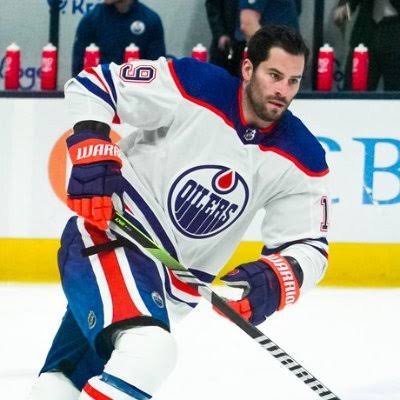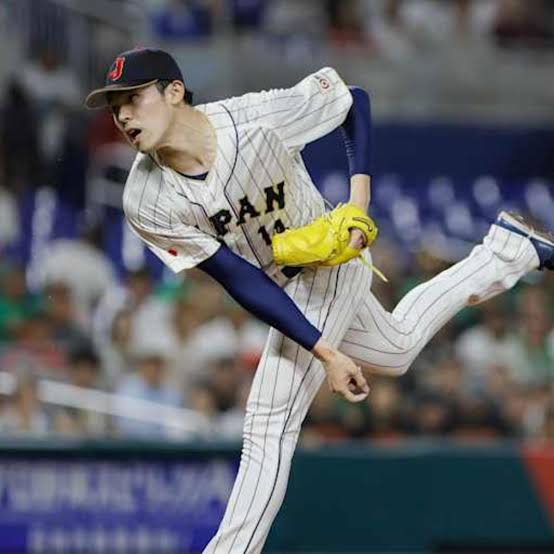Henrique Under the Microscope: Is He the Right Fit as the Oilers Third Line Center?
With the likes of Connor McDavid, Leon Draisaitl, and Ryan Nugent-Hopkins, the Edmonton Oilers have possessed plenty of top-six centre talent for nearly a full decade now. However, Edmonton’s third-line centre spot has constantly changed over the years. From Mark Letestu to Kyle Turris to Ryan McLeod, the Oilers have had some difficulty finding a consistently effective player to fit that role in the long-term.

Heading into the 2024-25 season, Adam Henrique was projected to be Edmonton’s 3C. Traded from the Anaheim Ducks at the 2024 Trade Deadline, Henrique has primarily centred the third line for the vast majority of his tenure in Edmonton.
But, following a disappointing road trip to California last weekend where Edmonton lost to LA in overtime and Anaheim in regulation, the coaching staff has continued to shuffle the forward lines, making significant changes.
One of them included the temporary demotion of Adam Henrique to the fourth-line. In their game against Utah Hockey Club on New Year’s Eve, the Oilers deployed Ryan Nugent-Hopkins as 3C, while the Oilers mostly played Mattias Janmark in that spot against the Anaheim Ducks on Friday night, while Henrique centred the fourth-line.
Henrique was back to 3C in Edmonton’s most recent game against Seattle. However, this frequent line shuffling by the coaching staff does raise a question; is Adam Henrique a truly capable third-line centre for a Stanley Cup Contender?
To answer that question, I often like to use 5-on-5 goal differential. Now, for years, the Oilers possessed a bottom-six that consistently leaked goals against, often ending up outdoing McDavid and Draisaitl’s elite production. From the start of 2017-18 season up until the midpoint of 2021-22, the Oilers were out-scored at a ratio of 230 to 376 without McDavid and Draisaitl on-ice – that’s a horrendous 37 percent goal differential!
Fortunately, they have taken a big step forward in recent years, but is it enough?
Henrique played 22 games in the regular-season with the Oilers in 2023-24, 17 games in the 2024 playoffs, and 39 games for the Oilers in 2024-25 thus far. Henrique maintained a strong goal differential in the time he played with the Oilers in 2023-24, while he’s produced an exact net-even goal differential this season.
Looking at these results at first glance, it’s difficult to complain about Henrique’s play. Sure, he’s not a flashy player, but after all, he’s doing what we all wanted, right?
Producing a positive, or even a net-even GF% away from McDavid and Draisaitl at 5v5 is a feat that a long list of Oilers players have failed to achieve over the years, a list that even includes the likes of Ryan Nugent-Hopkins.
That being said, there are two major concerns I have with Henrique’s play.
Firstly, Henrique’s 5-on-5 production rates are rather lacklustre. His points per hour rate at 5v5 is a mere 0.91, which is what you’d see out of a typical defensive fourth-liner. Henrique has just 7 points at 5v5 all season long, and it’s not up to par for a bonafide 3C on a cup contender.
Now, some may immediately retort that if Henrique is producing a positive goal differential and limiting goals against, how much does his point-per-hour rate really matter in the grand scheme of things?
That brings me to my second point; can Henrique sustain his goal suppression results?
Henrique’s strong goal differential is not driven by goals for. Rather, it is driven by how he’s hardly been on-ice for many goals against.
In 61 regular-season games in Edmonton, Henrique has been on-ice for a mere 1.75 goals against per 60, ranking higher than 92% (!) of NHL forwards. That is some quality defensive goal suppression.
However, many analysts – like me – often like to additionally use scoring chances and expected goals against rates to evaluate defence. This is largely because goals-against rates for skaters can often be heavily impacted by goaltending variance, especially in smaller samples.
These numbers are not too pretty here. In fairness to Henrique, his line has out-shot the opposition, but in terms of expected goals – which attempts to measure both shot volume and quality – his line has been subpar. For reference, Ryan McLeod – Edmonton’s former 3C before Henrique – maintained a 55% xG% as Edmonton’s 3C.
Now, note the fourth column there; on-ice save percentage. The Oilers allow more dangerous chances against with Henrique on-ice than without, despite the fact that Henrique is not always faced against the toughest competition. And yet, for some reason, Edmonton’s goalies are consistently saving shots at a higher rate than expected when Henrique steps on-ice, thus resulting in a positive goal differential.
Now, public expected goal and scoring chance models are far from perfect. There have been several cases of elite players that can consistently outperform them.
For instance, Leon Draisaitl has almost always held a higher actual than expected goal differential due to his elite finishing and passing talent inflating his shooting percentage. Another example is prime Brent Seabrook, who was elite at defending the front of the net, so much that his GA would be lower (a.k.a. better) than his xGA.
Could Henrique be an example of this type of player who can maintain a consistently high on-ice save percentage?
As of now, there’s no clear answer here. Different people will have different perspectives.
Some may tell you that, considering that Henrique has played 61 regular-season games and 17 playoff games, which is a pretty significant sample, we should weigh the actual goal differential more than the scoring chance results. It may be difficult to argue that it’s a sheer coincidence that Henrique has managed a high oiSV% in three different samples.
Others may note that it’s incredibly rare to see forwards that can consistently sustain a high oiSV% like this, and while Henrique may be a responsible player in his own end, his current goal differential results will eventually regress by the end of the season. It is worth noting that in his last 10 games specifically, Henrique holds a 43 percent goal differential; there are some warning signs of regression.
So, what are Kris Knoblauch’s current options here in regards to deployment? In my opinion, he has three, each some with positives and negatives.
The first option is for the team to stick with what they’re currently doing, with Henrique at 4C. It might result in a more balanced forward core, and Henrique’s results are likely to improve against weaker competition. However, if the Oilers are to go this route, they could benefit from acquiring another winger at the trade deadline.
The second option is to keep Henrique at 3C, and see if his goal differential results can sustain, because there is a legitimate chance they could. If the Oilers do want Henrique at 3C, it would be best to reunite the Mattias Janmark – Henrique – Connor Brown line, which is where Henrique has had his most success at 3C. That trio holds a fantastic 58 percent expected goal differential, out-scoring opponents 5 to 4.
The third option is to try Henrique as a top-six winger. Personally, this is something that I would like to see the coaching staff explore.
It’s worth mentioning that Henrique was playing on the top line with Connor McDavid and Zach Hyman to end the 2023-24 regular season and begin the 2024 playoffs, and in roughly 80 minutes together, they out-scored opponents 8 to 3 at 5v5 while holding a superb 60 percent expected goal differential. Unfortunately, they were split up after Henrique sustained an injury, but it could definitely be worth exploring again this season with Henrique healthy.
All-in-all, Henrique’s results are a mixed bag. There are some major positives in his numbers, but there are a couple of red flags as well. Whether he’s an adequate third-line centre or not depends on his deployment and if his elite goal-suppression results can be sustained for the rest of the season and into the playoffs. As we approach the trade deadline, this is an interesting storyline to keep note of.





